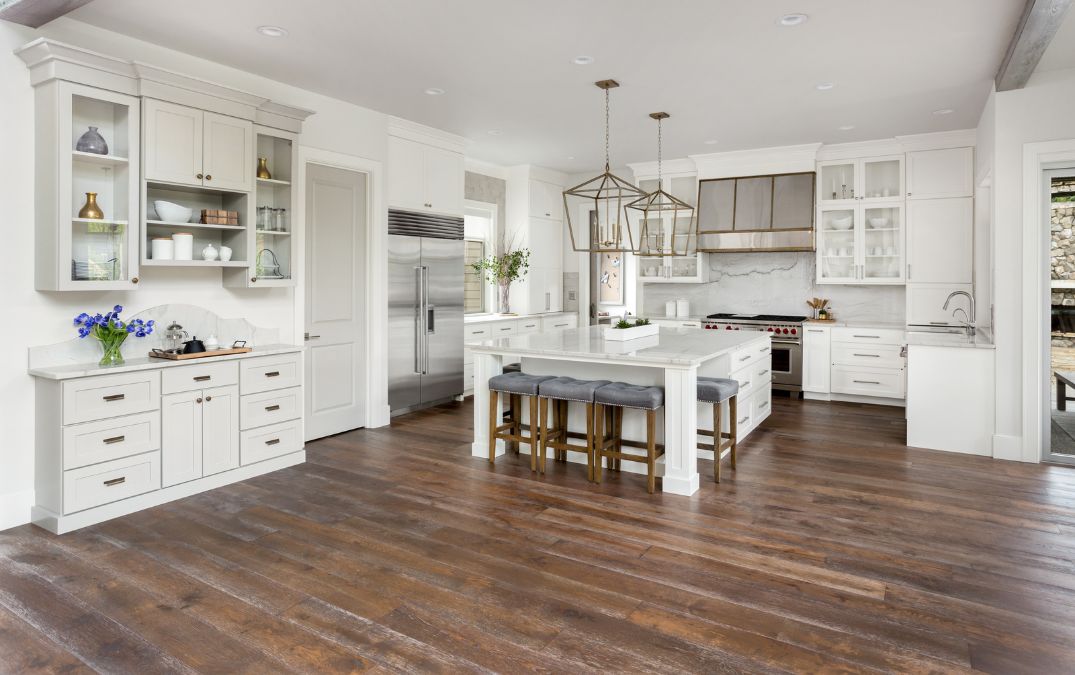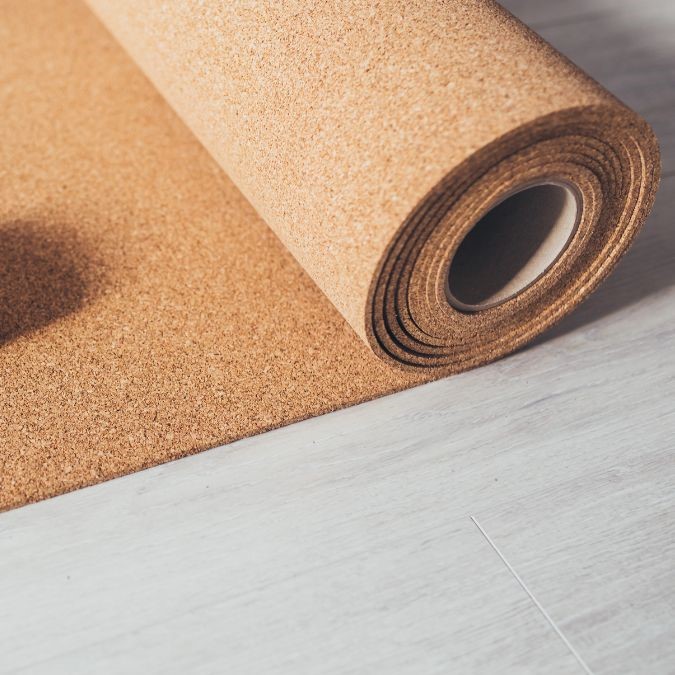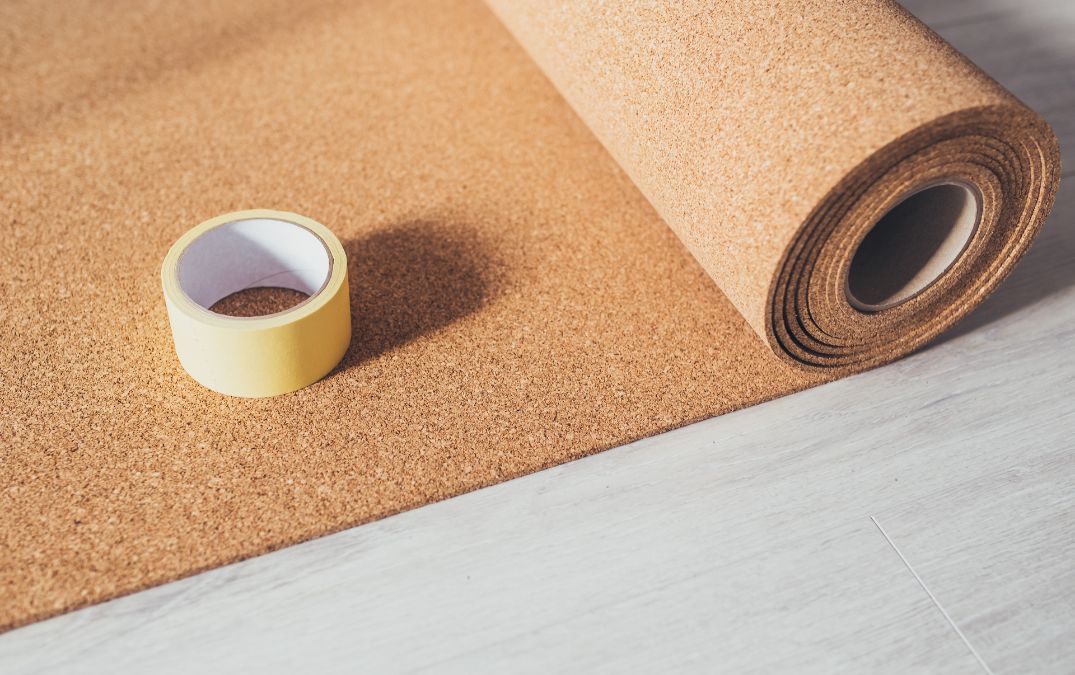When laying a wooden floor on concrete, the method you choose, be it floating, gluing, or nailing, will depend on the type of wood flooring and the specific requirements of your space. Begin by planning the layout, being sure that the planks will run parallel to the longest wall or the main light source in the room. This orientation often creates the most visually appealing result.
- Floating floor
A floating floor is the easiest method, especially for engineered wood. The planks are not attached to the subfloor but are instead clicked or locked together. Start by laying the first row of planks along the wall, using spacers to maintain an expansion gap of about 1/4 inch. As you lay subsequent rows, fit the tongue-and-groove joints together, tapping them gently with a rubber mallet to secure a tight fit. Stagger the joints of each row to create a more stable and aesthetically pleasing pattern.
- Gluing method
If you’re using the glue-down method, particularly with engineered or solid wood, apply a high-quality wood adhesive directly to the concrete subfloor using a trowel. Work in small sections to prevent the adhesive from drying out before the planks are laid. Press each plank firmly into the adhesive, ensuring it bonds well to the subfloor. Use spacers to maintain an expansion gap along the perimeter, and wipe away any excess adhesive immediately to prevent it from hardening on the surface.
- Nailing method
While nailing is less common on concrete, it’s still an option if the wood flooring is installed over a wooden subfloor or batten system attached to the concrete. In this case, use a flooring nailer or stapler to secure each plank to the subfloor. Begin at one wall, laying the first row with the groove side facing the wall and nailing along the tongue edge. Continue with subsequent rows, ensuring each plank fits snugly and is securely nailed into place, while maintaining the necessary expansion gap.
Install baseboards or skirting boards along the perimeter of the room. These not only conceal the expansion gap left around the edges of the floor but also provide a clean transition between the floor and the walls. Choose baseboards that complement the style of your flooring, and secure them to the wall, not the floor, to allow for natural expansion and contraction of the wood. For inside and outside corners, use a miter saw to create precise angled cuts that fit together seamlessly.
Next, address any doorways or transitions between different types of flooring by installing thresholds or transition strips. These pieces bridge the gap between the wooden floor and other surfaces, such as tile or carpet, ensuring a smooth and safe transition while enhancing the overall appearance. Thresholds come in various styles and materials, so select one that matches the height and finish of your flooring.
Finally, give the new floor a thorough cleaning to remove any dust, adhesive residue, or stray nails. Use a soft bristle broom or vacuum with a hard floor attachment to avoid scratching the surface. If needed, lightly damp mop the floor with a manufacturer recommended cleaner, taking care not to use excessive water, which can damage the wood. Regular maintenance, such as sweeping and occasional polishing, will keep your new wooden floor looking beautiful and extend its lifespan. These finishing touches complete your project, leaving you with a stunning, durable floor that enhances the beauty and value of your space.



